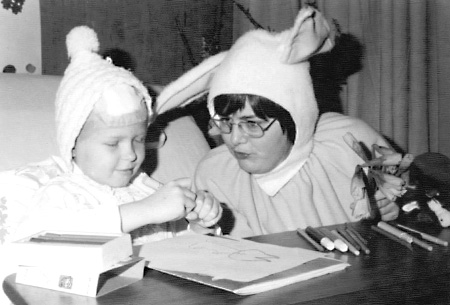Apr. 14, 2015

When Becky Kruse chose radiologic technology at age 18, little did she know that it would become a passion and a cause that would last a lifetime.
Her story is a classic example of tenacity in overcoming challenges, mastering a profession and giving back to the people and organizations she met or joined along the way. Her story begins with a child, a co-worker’s vacation and a summer job.
At age 16, the radiographer started in health care as a storeroom attendant at Silverton Hospital, a facility in the next town over from where she lived. After only a week of ordering supplies and delivering them, Becky found herself on her own because the woman responsible for the department went on summer vacation.
“I was the only one there, so I organized the department and then got bored,” recalls Becky. “At lunch I would go up to the pediatric ward and play with the kids. One day one of the patients needed to get an x-ray and I escorted him. That was my first experience with x-ray.”
That exposure to patients and the profession stayed with Becky as she graduated from high school and made plans to attend the Oregon Institute of Technology program in Klamath Falls. But first, Becky took a slight detour around the world, traveling with a friend to Japan for six months. Taking a ship both ways, the friends survived on $500 each. However, she lost her spot in the program. “When I got back, I looked into schools and found one in Portland: the University of Oregon Medical School,” says Becky. “I applied in July, which is when hospital-based programs started, so I worked for a year at a nursing home and saved money.”
Facing and Overcoming Challenges
At two points in the two-year program, Becky faced the prospect of not continuing her education in radiography. Personally, she also knew the health care field from the inside — she had been dealing with diabetes her whole life.
The first hurdle was a question-and-answer section during the entry interview, with the educational director Hilda Drumm telling Becky that she didn’t like one of her answers. Then, halfway through the program, Becky broke her foot and jammed her knee in a motorcycle accident. Drumm called a meeting with the students to discuss whether Becky’s injuries were keeping her from working, even though Becky continued to do her job on crutches for two months. Becky says her peers supported her and her efforts in “holding my own” on the wards and in the classroom.
Serving the Profession, Patients and Peers
Fast-forward 40 years. Becky recalls that even though Drumm was tough, the educational director also helped fuel Becky’s involvement in the local, state and national professional societies. Both Drumm and Jerry Hale, the department head, encouraged the students to attend meetings and serve on committees and boards.
“Once I became involved in the Society, it became a passion,” Becky says. “It gave me something more than just my going to work and taking care of patients. It gave me pride, although I got nagged about it constantly. I used my vacation time and all of that, and I didn’t complain.”
That start fed Becky’s need for service and helping patients while shaping the way she viewed her career overall.
“Jerry was always [saying], ‘You always have to be a part of what you are. You have to become a part of it. You can’t just use it as a job.’”
That is how Becky came to be president-elect of the ASRT on a day in 1983 when Jim Mom, Bill May and ASRT staff sat down in a room in Albuquerque to sign the papers that created the ASRT Foundation. At that time, the idea was to create educational courses. The scholarships, research grants and other types of member support would come later.
“Our profession is technical, because you get to work with equipment, and it is personal, because of the people who are patients and those who are peers. That is why I love it.”
Giving as a Legacy
The donation Becky is giving to the Foundation comes from years of saving, serving and a strong belief in community.
Her mother and father built a strong foundation by taking calculated chances and helping others. “You pick up the essence of your parents. They always helped the community. They were always helping someone. So you learn, even though you don’t know you’re learning.”
She started giving $25 a month, then increased that to a maximum of $100 a month as her career advanced. Becky gave through her years as a radiographer and departmental manager and then as the continuing education department head at ASRT.